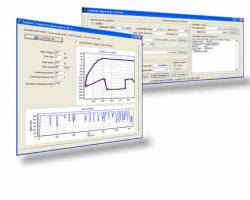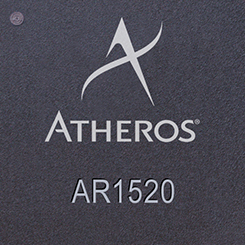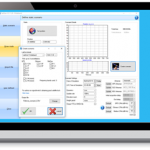
UK electronics design and manufacturer Racelogic has released new scenario-generation software, SatGen, intended to simplify creating custom scenarios for the company’s LabSat GPS Simulator.
According to Racelogic, the software can simulate user-defined dynamic GPS scenarios from scratch anywhere in the world.
UK electronics design and manufacturer Racelogic has released new scenario-generation software, SatGen, intended to simplify creating custom scenarios for the company’s LabSat GPS Simulator.
According to Racelogic, the software can simulate user-defined dynamic GPS scenarios from scratch anywhere in the world.
Priced at £9,000 (US$14,700), the SatGen software is designed for use with Racelogic’s new LabSat GPS RF simulator, which can replay real-world data, reproducing common conditions such as satellite obstructions and atmospheric effects. SatGen enable users to generate customized scenarios early in GPS device development to cover specific testing requirements.
The new software enables receiver designers and developers of other GPS-featured OEM, consumer, and professional products to use an NMEA file pre-recorded from a GPS receiver, or specify a scenario manually from user-defined criteria, including position, velocity, and heading.
It can also generate a scenario with motion data saved from a GPS enabled device, such as Racelogic’s VBOX. The .vbo file recorded on the VBOX can be imported into SatGen, where the SatGen software then automatically generates an NMEA file that is converted into a binary file.
Alternatively, if users are interested in a particular route, they can sketch an outline of the path in Google Earth and the SatGen software will fill in the gaps, smoothing out sharp corners and setting a realistic velocity profile.
According to the company, this “Add Path” tool allows users to define a complex route through a foreign city in a matter of minutes. Once created, it’s possible to use SatGen scenarios on any number of LabSat simulators.
Stephen Jenkins, LabSat project manager, offers an example of how SatGen could be used. “If your company is based in the USA, but you sell your GPS products internationally, SatGen will enable you to create a test scenario for virtually any location,” Jenkins says. “You can program a drive round Tokyo, or a route through Stuttgart for example, and check that your design performs as required, without needing to leave the office.”
Minimum system requirements include a Microsoft Windows XP operating system, 1.8 GHz or greater processor, 2 GB free RAM, 8x DVD+/-RW ROM Drive, and a USB 2.0 x 1 port with at least a 2.046 Mbytes per second transfer rate.




